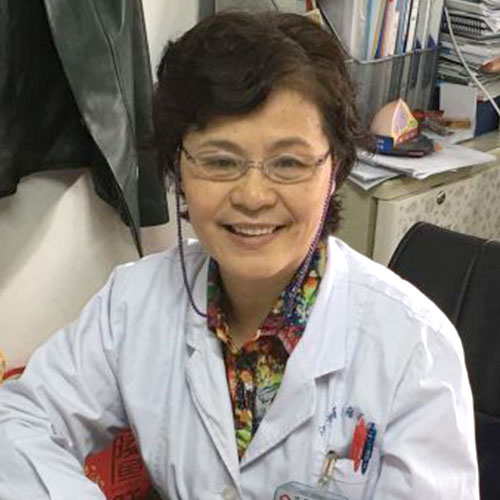本研究重点分析复发模式和定义局部复发的预测因素,研究病例是荷兰癌症登记处2003年起被诊断为原发性浸润性乳腺癌、在手术之前或手术同时(没有远处转移)的女性患者(N = 8035),研究分析其生存期,了解局部复发的预测因子,并同时对第一次,第二次及第三次复发的预测因素进行评估。10年随访了8035名患者,509例(6.3%)患者首次出现局部复发,第二次和第三次复发发生率分别为41%和48%。
乳腺癌复发的所有类型(局部复发/第二原发癌/转移)的最重要,预测因子:第二次复发依次为肿瘤大小、手术类型和放疗。与第一次复发的预测因子相比,后面两个因素是相反的。第二次和第三复发的预测因子没有统计学差异。五年后的累积风险为为0.0448,风险区间为0.00896。5年之后风险是0.0068,从而建立了随访的下界。明确在随后的10年中,中风险组(< 50岁,内分泌治疗)应接受两个随访,高风险组(> 50岁,无内分泌治疗)应接受7个随访,低风险组(> 50岁,内分泌治疗)10年中都维持在阈值之下。随访内容有:年龄(≤50 / > 50),肿瘤大小(≤2 cm / > 2 cm),病理级别(I / II / III),淋巴结(0 / 1 - 3 / > 3),激素状态(阳性/阴性),手术类型(保乳/乳房切除术),放疗(yes / no),激素疗法(yes / no),化疗(是/否。
点评:
如何判断乳腺癌的复发,应该注意哪些关键问题?这是临床医生比较棘手的问题,目前已经有多种可以判断乳腺癌预后的方法,常规如肿瘤大小、淋巴结转移、脉管浸润、分化程度等,基因检测的结果也常常作为重要的参考和依据。最常用的基因检测手段为应用免疫组化方法对乳腺癌组织的雌激素受体(ER)、孕激素受体(PR)、人类表皮生长因子受体2(HER-2)和Ki-67表达水平进行定性分析,通过分析这些基因的检测结果可以将乳腺癌分为不同预后及治疗敏感性的亚群,但不知为何,本研究未把HER-2 、Ki-67指数作为观察随访的内容,本研究关注的是肿瘤大小、手术类型和放疗等,且发现第一次复发和第二次复发的预测因子中更为重要的是放疗,并发现复发的模式有所不同。
近年来随着乳腺癌基因表达谱研究的深入,一系列新的以多基因检测(multi-gene testing,MGT)为基础的乳腺癌预测模型被开发,可以进一步提高传统临床病理指标和免疫组化指标的预测价值。如:IHC4评分(IHC4 score),MammaPrint,PAM50复发风险评估(Prosigna?),Oncotype DX,基因等级指数(genomic grade index,GGI), 乳腺癌指数(breast cancer index,BCI),EndoPredict,同源重组缺陷评分等。2015年,NCCN指南确定了“乳腺癌21基因检测”的价值,21基因检测结果以积分的形式表示,积分用于对肿瘤可能发生的生物学行为进行预测,提供个体化的治疗效果预测和10年复发风险的预测。当然,多基因检测模型仍有一些局限之处,对同一组样本,虽然不同的模型都可以把人群分为风险相差显著的亚群,但对于每一个个例,不同方法对应的预测结果中有20%~30% 的结果并不一致。
本研究在长达10年持续跟踪,为乳腺癌首次复发风险研究出预测模型,该模型可用于分辨乳腺癌患者复发风险的高低,开发一个决策支持工具,可以更有效地分配资源,为初次治疗的患者提供了治疗的借鉴,并且方便易行,便于临床医生使用。
专家简介

孙蔚莉教授,江苏省肿瘤医院内科主任医师、病区主任,从事肿瘤内科工作30余年。现任江苏省肿瘤化疗与生物治疗委员会乳腺癌学组副组长,江苏省医学会老年医学分会委员,ASCO会员,CSCO会员;中华医学会会员;中华医学会、江苏省、南京市医学会医疗事故鉴定专家库成员等。
研究摘要
Towards personalized breast cancer follow-up: Prediction model for recurrence and allocation of visits during 10 years of follow-up
Poster Spotlight: A. Witteveen (Netherlands)
The aim of this nationwide population based study was to analyze recurrence patterns and define predictive factors for locoregional recurrence (LRR) and subsequent recurrences up to ten years after the primary tumor. In the Netherlands, follow-up takes place for five years after primary treatment with a yearly mammography. Using risk thresholds, follow-up visits can be reallocated based on risk over the ten years following primary treatment.
Women diagnosed with primary invasive breast cancer in 2003 with no distant metastasis, previous or synchronous tumors and curatively treated with surgery were selected from the Netherlands Cancer Registry (N?=?8,035). Survival analysis was performed to identify predictive factors for LRR. Predictors for the second and third recurrence after a LRR were assessed as well. Based on the current follow-up, the lower risk boundary and quantiles for intervals were determined. With these thresholds redistribution of the visits was established for a low, middle and high risk group, over ten years of follow-up.
During ten years of follow-up 509 (6.3%) of the 8,035 patients developed a LRR as a first event. Predictive factors for first LRR can be found in Table?1. The chances of developing a second and third event after a LRR were 41% and 48% respectively. Most important predictors for all types (LRR/second primary/metastasis) of second recurrence were tumor size, surgery type and radiotherapy, with the effect of the last two reversed compared to the first recurrence (Table?1). The predictors for second LRR and third recurrence were all non-significant.
Values in Bold indicate a significant difference.
This study developed a prediction model for LRR risk for up to ten years of follow-up. The model can be used to identify patients with a low or high risk to personalize follow-up after breast cancer, develop a decision support tool and allocate resources efficiently.





 京公网安备 11010502033352号
京公网安备 11010502033352号